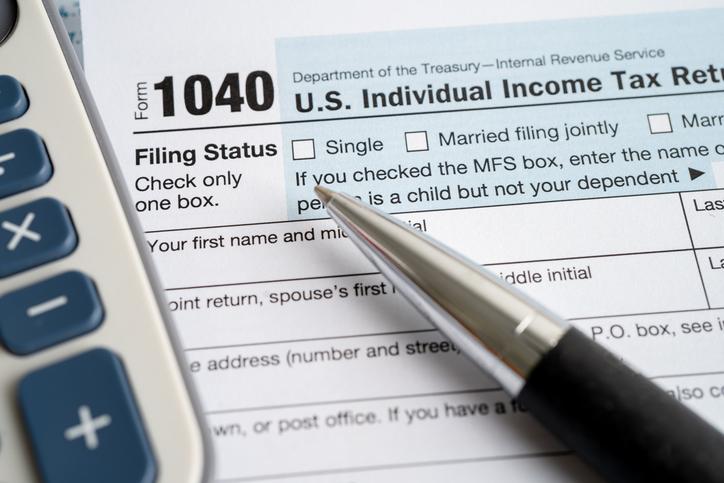Turning 65 doesn’t just mark a milestone in life, it can also unlock valuable tax savings. The IRS grants seniors an extra standard deduction. This deduction can lower taxable income by thousands of dollars, helping stretch retirement savings further. Whether you’re newly retired or planning ahead, understanding how this deduction works, and when it makes the most sense to use, can have a big impact on your bottom line at tax time.
A financial advisor can help you plan how to take advantage of the extra deduction at 65, using it to reduce taxes and extend the life of your retirement savings.
How the Standard Deduction Works
The standard deduction is a flat-dollar reduction in taxable income available to most taxpayers. Instead of itemizing individual expenses like medical bills or charitable donations, you can take the standard deduction to automatically lower your taxable income. This makes filing simpler and often results in savings, especially for people without enough deductions to justify itemizing.
The IRS updates standard deduction amounts every year to keep pace with inflation. It makes these adjustments to protect taxpayers from cost of living increases. For example, the deduction available in 2025 will be higher than in 2024, reflecting changes in consumer prices. Knowing these updates can help seniors and their families better anticipate their taxable income from year to year.
The standard deduction is not a one-size-fits-all figure. It depends on your filing status, such as single, married filing jointly, head of household or married filing separately. Each status has its own base deduction amount, with married couples generally receiving the largest benefit. Seniors over 65 are eligible for an additional amount on top of these figures. This eases their tax burden as income often shifts in retirement.
The extra deduction for older taxpayers recognizes that retirees often have fixed income sources, such as Social Security or pensions. By reducing taxable income further, the government aims to help seniors preserve more of their financial resources. This benefit can be especially impactful for seniors balancing healthcare costs, retirement savings, and day-to-day living expenses.
Standard Deduction for Seniors (65+) in 2025
The table below outlines the standard deduction for 2025, including the extra benefit for seniors. The additional deduction applies separately to each spouse if both are 65 or older, which means married couples can receive an even larger combined benefit.
| Filing Status | Standard Deduction (2025) | Additional Deduction for 65+ | Total Possible Deduction (65+) |
| Single | $15,750 | +$2,000 | $17,750 |
| Married Filing Jointly | $31,500 | +$1,600 each spouse | Up to $34,700 |
| Married Filing Separately | $15,750 | +$1,600 | $17,350 |
| Head of Household | $23,625 | +$2,000 | $24,625 |
These increases may look modest on paper, but they can have a real effect on taxable income. For example, a retired married couple where both spouses are over 65 could deduct more than $34,000 from their income before owing any federal income tax. That cushion can help retirees stretch savings, offset medical costs, and reduce the chance of dipping into investments sooner than planned.
Beginning in 2025, some seniors may also qualify for an additional $6,000 bonus deduction, depending on income level. This benefit phases out for higher earners but can further reduce taxable income for retirees who qualify.
How to Claim the Extra Standard Deduction

The extra standard deduction for seniors isn’t something you need to apply for separately. When you complete your federal tax return, the IRS automatically adds the higher deduction if you or your spouse are age 65 or older by the end of the tax year. You don’t have to file a special form to benefit, it’s built into the tax calculation process.
The IRS determines eligibility based on your date of birth, which you provide when filing your return. If you’re filing electronically, the tax software will prompt you to confirm whether you or your spouse meet the age requirement. Paper filers simply check the designated boxes on Form 1040 or 1040-SR to indicate they qualify for the additional deduction.
While the process is straightforward, it’s important to be accurate with your filing. A wrong birthdate or unchecked box could cause you to miss out on hundreds—or even thousands—of dollars in tax savings. Using tax software or working with a qualified tax professional can help ensure you maximize your return.
When Did the Standard Deduction Change for Seniors?
The additional standard deduction for seniors has been part of the U.S. tax code since the early 1980s. Congress introduced it as a way to provide targeted relief for older taxpayers who may be living on fixed or reduced income. From its inception, the rule allowed seniors age 65 and older to claim more than the standard amount available to younger taxpayers.
While the existence of the extra deduction has remained steady, the amounts have shifted regularly. The IRS updates both the base standard deduction and the senior add-on every year to reflect inflation. This means that although the rule hasn’t fundamentally changed, the benefit has grown gradually to keep pace with rising costs of living.
The most notable updates occur each tax year when the IRS publishes new deduction amounts. For example, seniors saw meaningful increases in both 2023 and 2024 due to higher-than-usual inflation adjustments. The 2025 figures continue that trend, giving seniors additional room to reduce taxable income and preserve more of their retirement resources.
When Should You Not Take the Standard Deduction?
The standard deduction is the simpler choice for most taxpayers, but there are situations where itemizing deductions can lead to a lower tax bill. If your deductible expenses (such as mortgage interest, property taxes, charitable donations, or significant medical costs) add up to more than your standard deduction, itemizing could be the smarter move. Seniors who face higher medical expenses, for example, may benefit from listing those costs instead of relying on the flat deduction.
Taxpayers who pay substantial state and local taxes may also find that itemizing offers more value. Although the federal deduction for state and local taxes (SALT) is capped at $40,000, combining this with other eligible deductions can sometimes push your total above the standard deduction amount. In that case, skipping the standard deduction may reduce your taxable income more effectively.
Certain taxpayers are required to itemize. For example, if you are married but file separately and your spouse itemizes deductions, you must do the same. Likewise, nonresident aliens and individuals filing for a period of less than 12 months (due to a change in accounting periods) cannot take the standard deduction.
Bottom Line

For seniors 65 and older, the extra standard deduction can offer some tax relief at a stage of life when preserving income matters most. While the deduction is applied automatically and simplifies filing for many retirees, it’s still worth comparing the benefits of itemizing if you have significant expenses like medical bills or mortgage interest. Understanding how the deduction works, when it has changed, and how to claim it can help you make smarter tax decisions year after year.
Tax Planning Tips:
- A financial advisor can help you understand whether you qualify for the extra standard deduction and how it fits into your overall tax and retirement strategy. Finding a financial advisor doesn’t have to be hard. SmartAsset’s free tool matches you with vetted financial advisors who serve your area, and you can have a free introductory call with your advisor matches to decide which one you feel is right for you. If you’re ready to find an advisor who can help you achieve your financial goals, get started now.
- If you want to know how much your next tax refund or balance could be, SmartAsset’s tax return calculator can help you get an estimate.
Photo credit: ©iStock.com/designer491, ©iStock.com/sasirin pamai, ©iStock.com/SeventyFour
Read the full article here
















